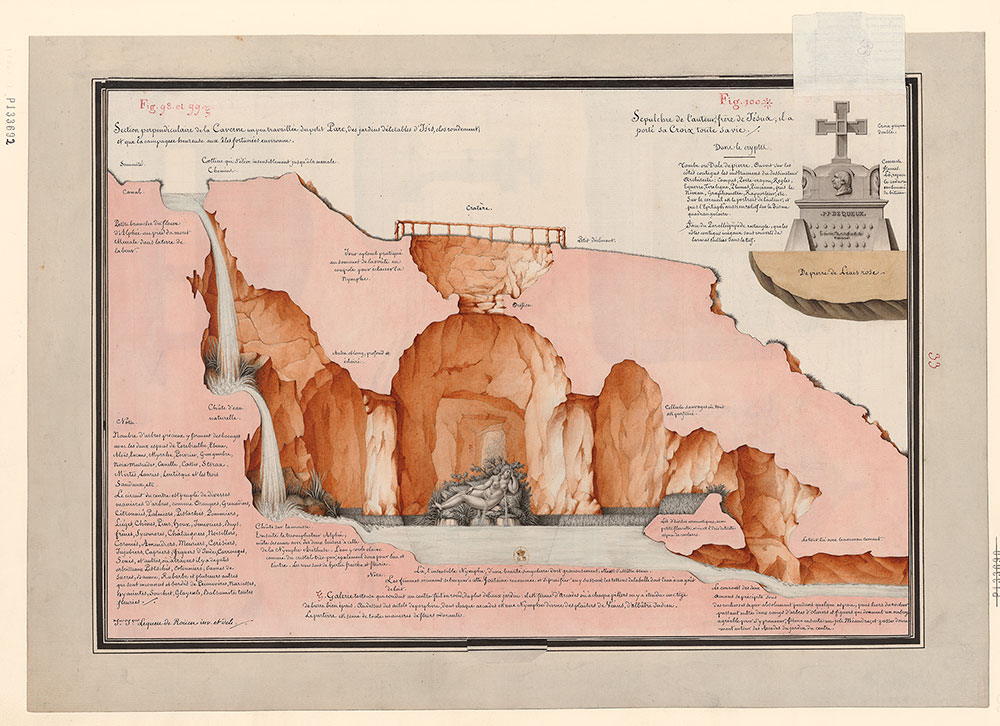
For this depiction of a grotto in the gardens of Isis, the Egyptian goddess of fertility, Lequeu turned to Ovid’s tale of the nymph Arethusa. She was transformed into a spring to elude being raped by the river god Alephus; the god, in turn, transformed himself into a river to follow her further. Here, Alephus is represented as the cascade at left, and the waters mingle in a cavern whose oculus Lequeu’s inscription refers to as an orifice. The figure of the nymph recalls a description in the erotic Renaissance novel The Dream of Poliphilo. Lequeu owned the 1804 edition of the text.
At upper right, Lequeu envisioned his own tomb, containing his “cadaver embalmed in bitumen.” The sepulchre is surmounted by the instruments of Lequeu’s profession as an architectural draftsman, including a compass, rulers, and porte-crayon. Beneath the flap of paper on which the tomb is drawn, however, is an alternative design bearing a Greek cross—an echo of Lequeu’s bitter remark that he carried the cross his entire life.
Jean-Jacques Lequeu (1757–1826)
Cavern in the Gardens of Isis, from
Civil Architecture, ca. 1810–25
Pen and black ink, brown and gray wash, watercolor, patch with revision at upper right
Bibliothèque nationale de France, Departement des Estampes et de la photographie
